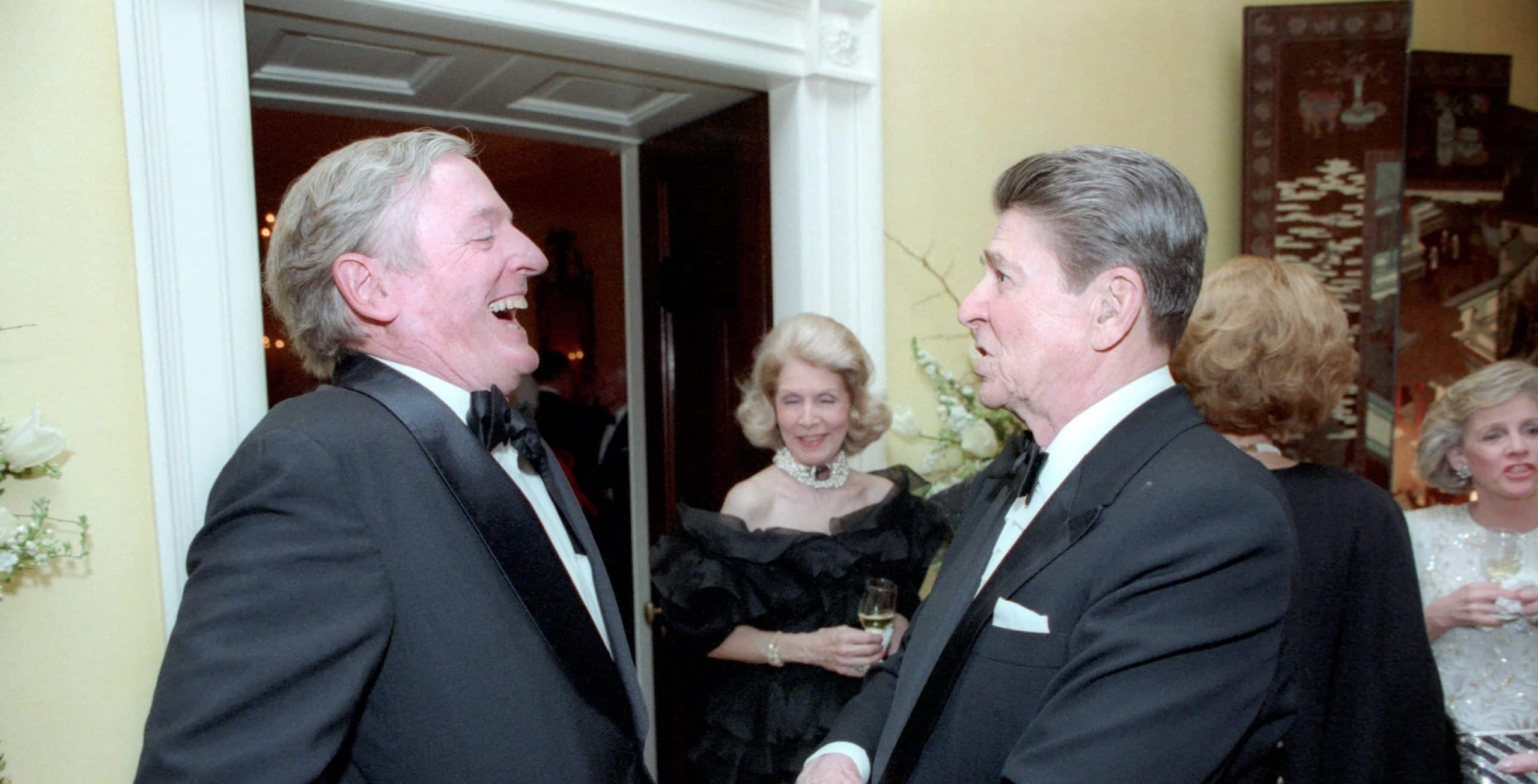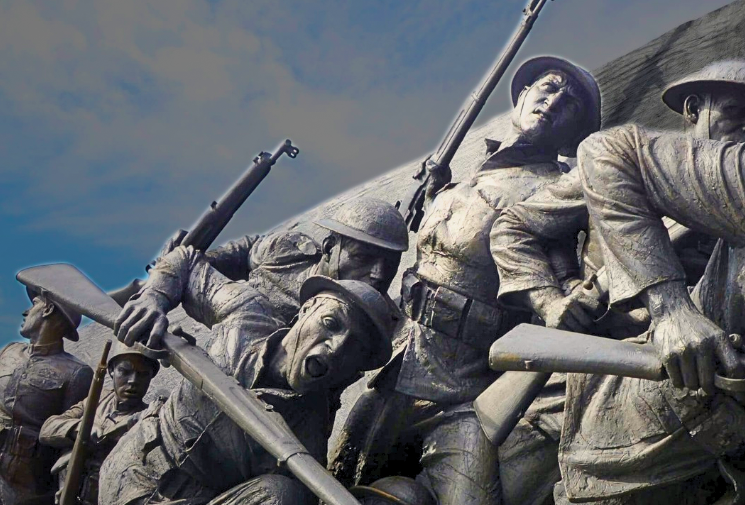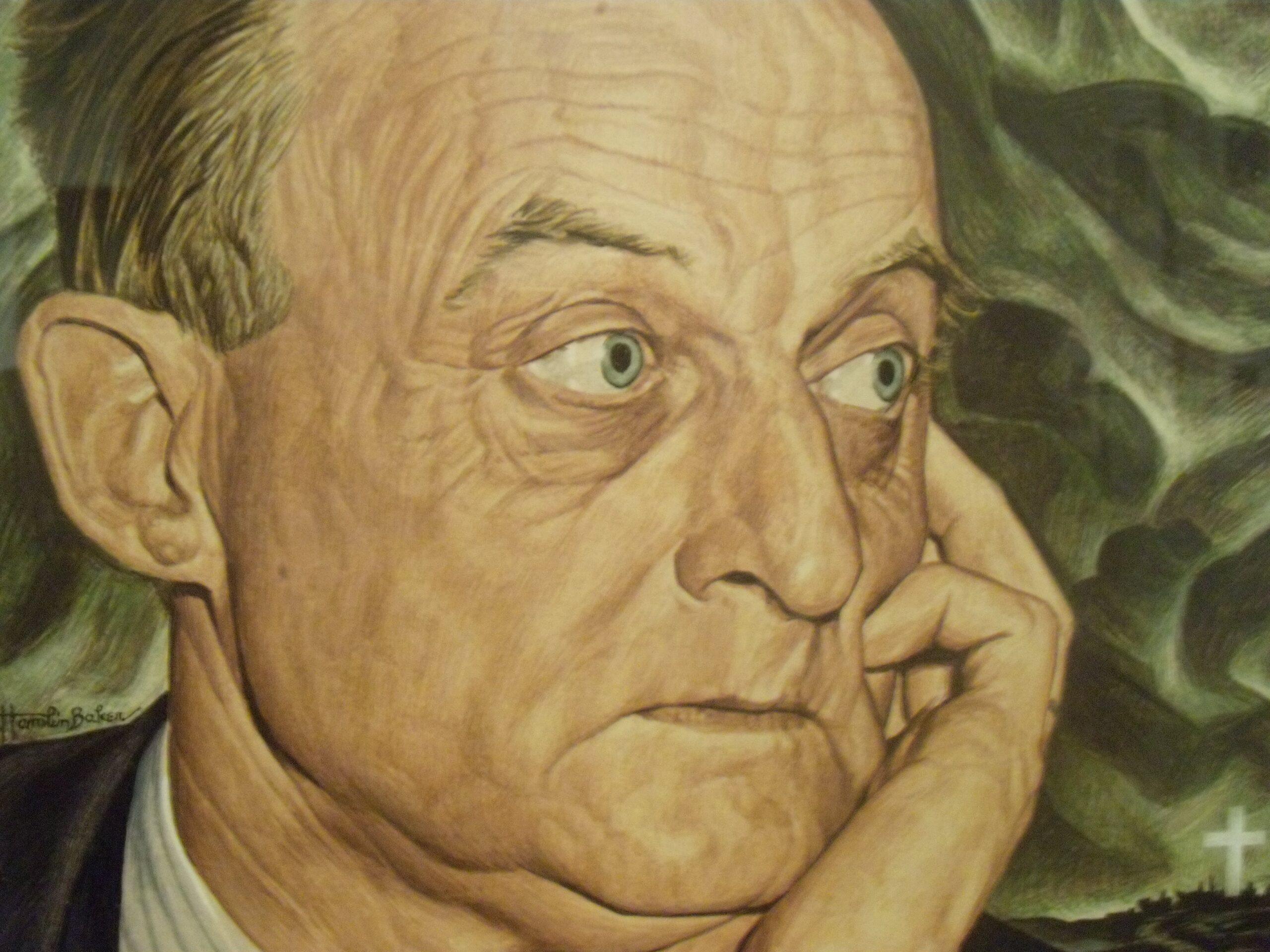The Right: The Hundred-Year War for American Conservatism
By Matthew Continetti
(Basic Books, 2022)
In the middle of the nineteenth century, England’s elites were possessed by a frenzy to discover the secrets of ancient Egypt, especially the source of the four-thousand-mile-long Nile River, the holy grail of exploration. The greatest explorers, including the redoubtable Richard Burton, were dispatched to the Dark Continent and instructed not to return until they had found the source, rumored to be a giant lake in the center of Africa. The life-and-death trials that the expeditions of Burton, John Speke, and others underwent are recounted by Candice Millard in her enthralling work River of the Gods.
A similar frenzy now possesses conservative thinkers of all persuasions to settle the question, “What is the source of modern American conservatism?” There is a special intensity in the search because the nation is still guided in many ways by the flow of conservative ideas. What is the true source—the bracing independence of the libertarian or the measured prudence of the traditionalist? The federalism of the Constitution or the anti-federalism of the Articles of Confederation? The populists or the elitists? The fusionism of Frank Meyer or the neoconservatism of Irving Kristol?
We have had this debate before. Indeed, American conservatism is marked by a never-ending clash between its two main streams—traditionalist and libertarian. Today’s debaters stand on the shoulders of past thinkers like Russell Kirk, who proposed ancient Athens and Rome as major sources of modern American conservatism. The historian George Nash traced modern conservatism to the post–World War II founding of National Review by William F. Buckley Jr., noting that Buckley defended Christianity and free enterprise as core American beliefs.
Followers of National Review senior editor Frank Meyer argued that conservatism did not exist as a movement until the birth of “fusionism,” a blending of traditional conservatism, libertarianism, and anti-communism, in the late 1950s and early 1960s. Until the advent of fusionism, National Review publisher William A. Rusher said, American conservatism was “a congeries of ill assorted half-enemies.”
The Claremont Institute’s Harry Jaffa, that tireless apostle of the Declaration of Independence, insisted that America’s meaning rested on the words, “We hold these truths to be self-evident, that all men are created equal.” Jaffa would brook no denial of this truth or its centrality to an understanding of American conservatism. In his book We Still Hold These Truths, Hillsdale College’s Matthew Spalding presents ten core principles of the American Founding that define our national creed and common purpose:
Liberty is the grand overarching theme of our nation’s history; equality, natural rights, and the consent of the governed are the foundational principles that set the compass of our politics; religious liberty and private property follow from these, shaping the parameters of our nation’s day-to-day life; the rule of law and a constitutionalism of limited government define the architecture that undergirds our liberty; all of these principles culminate in self-government, in the political sense of republican governance and the moral sense of governing ourselves; and lastly, independence encompasses the meaning of America’s principles in the world.
Irving Kristol, the father of neoconservatism, called for a return to the “republican virtue” of the Founding Fathers and invoked the ideal of a good society. He conceded that a “hidden hand” has its uses in the marketplace and uttered two cheers for capitalism.
National conservatism—a latecomer to the debate—borrows from social conservatism as it celebrates patriotism and family values and opposes open immigration, ever-ready internationalism, and rampant wokeism. It is America First without Charles Lindbergh and his embarrassing associations.
The preceding discussion does not presume to include all the streams of thought that make up American conservatism today—a daunting challenge for anyone. Matthew Continetti, the polymathic journalist and fellow at the American Enterprise Institute, is equal to the task. In The Right, Continetti recounts the intellectual and political history of American conservatism starting with presidents Warren Harding and Calvin Coolidge. He argues that Harding and Coolidge rejected progressivism for the philosophy of individualism and economic freedom, thereby establishing the basic philosophy of American conservatism. Continetti uses some five hundred pages to make his case and nearly succeeds in convincing us. In many ways, he has written an updated version of George Nash’s indispensable work The Conservative Intellectual Movement in America Since 1945. Like Nash, Continetti can sum up philosophers like Leo Strauss and Ludwig von Mises, politicians like Robert Taft and Barry Goldwater, and popularizers like Bill Buckley and Rush Limbaugh in a few words.
Continetti makes the essential point that the Republican Party and the conservative movement are two different institutions. The GOP is a political organization dedicated to winning elections and securing political power. In any conflict between principle and politics, the GOP will invariably choose politics. The conservative movement is an intellectual/political movement committed to ideas like limited government and traditional American values. In any conflict between principle and politics, the conservative movement will or at least should choose principle. The movement cannot be judged a success or a failure based on the returns of the last elections. It is successful when it creates an environment in which its ideas prevail, as during the Reagan presidency.
The framework of The Right, the author says, “is the endless competition and occasional collaboration between populism and elitism.” Another word for collaboration is fusionism, the meeting of the traditionalists and libertarians who are the main characters of his history. A superb writer, Continetti offers sharp sketches of the figures whose stories show why conservatism came to dominate American politics: individuals like the libertarian Milton Friedman, who valued personal freedom above all; traditionalists like Russell Kirk, who thought freedom had to be balanced with order; Cold Warriors like James Burnham, who argued that the fight against communism was the preeminent issue of the twentieth century; fusionists like Frank Meyer, who thought that libertarians and traditionalists could agree that freedom is the indispensable condition for the pursuit of virtue, which is the ultimate end of man as man; New Right activists like Phyllis Schlafly, who sought political power to reverse liberal social change; and originalist judges like Antonin Scalia, who deferred to the constitutional text.
Topping the enemies’ list was President Franklin D. Roosevelt, who built the federal government into “an ever-present behemoth” that regulated American life and dispensed benefits—from unemployment compensation to farm subsidies to income maintenance to Social Security. Republicans fought the New Deal on the grounds that it was a radical restructuring of America’s government and market, but at the time they made up a “dwindling crowd.” There would not be a coherent response until the founding of National Review by Bill Buckley, followed by the presidential candidacies of Barry Goldwater and Ronald Reagan.
Buckley and Reagan saw the 1964 Goldwater defeat as a foundation on which to build. They attributed his landslide loss to failures in message, public ignorance of conservatism, and fear of extremism. Despite Lyndon Johnson’s resounding victory, “riots, crime, and the radical opponents of the Vietnam War were about to rip apart American liberalism and the Democratic Party.”
An important member of the contracting Democratic center was Senator Henry M. “Scoop” Jackson of Washington, an environmentalist and defender of the welfare state. But Jackson also opposed forced busing to integrate de facto segregated schools (as did a great majority of black parents) and was “an unapologetic Cold Warrior.” He exemplified the neoconservatives who would occupy numerous positions of influence in the Reagan administration.
A key player at the other end of the political spectrum was Richard A. Viguerie, who built his direct-marketing company into a business empire, raising over his long career an estimated $7 billion for his clients. Viguerie popularized the term “New Right” to describe the political activists fighting abortion, the Equal Rights Amendment, school busing, media bias, and tax increases. The New Right of the 1970s
was an early manifestation of the 2000s-era Tea Party.
***
By the time Ronald Reagan ran for president in 1980, he had united the New Right, the neoconservatives, the supply-siders, and the religious right in a broad conservative coalition, demonstrating that fusionism was a workable thesis. As president, Reagan proved to be a master fusionist. Just six years earlier in the aftermath of the Watergate scandal, Continetti writes, conservatism had seemed moribund and the Republican Party irrelevant. But stagflation, crime, affirmative action, values issues, and assaults on the nation’s pride had “debilitated the Democratic Party.” America was ready for a conservative revolution.
Continetti sums up Reagan neatly: “Ronald Reagan was the most popular and successful Republican president since Theodore Roosevelt” on account of three major accomplishments. He restored Americans’ confidence in themselves, initiated an unprecedented period of economic prosperity through supply-side economics, and ended the Cold War at the bargaining table and not on the battlefield. But Continetti underestimates Reagan’s commitment to the issues that mattered to social conservatives, a key constituency of the Reagan coalition. Encouraged by Judge William Clark and other aides, Reagan wrote Abortion and the Conscience of the Nation, which described the right to life as a “transcendent right,” without which “no other rights have any meaning.” He is the only chief executive ever to publish a book while president. Reagan’s nominations to the Supreme Court, especially William Rehnquist as chief justice and Antonin Scalia as associate justice, affected the court for decades, preparing the way for the 2022 overturning of Roe v. Wade.
The author singles out Ed Feulner, the founder of the Heritage Foundation, as “a genius at tying together the strands of the American Right,” including the New Right, the religious right, and the neoconservative right, giving another example of fusionism in action.
Continetti describes the civil war between the conservative establishment based in Washington, D.C., and the populist critics of immigration, foreign trade, and foreign interventions, and he argues that the conflict culminated in the populist rejection of the establishment in 2016—that is, in the presidential nomination and victory of Donald Trump. A key ingredient of Trump’s November victory was the conservative superstructure that had taken on gigantic dimensions during twelve years of Republican presidents from 1980 to 1992. Conservatives had even achieved significant policy successes during Bill Clinton’s tenure, such as James Q. Wilson’s “broken windows” approach to law and order and the feasibility of “workfare” in the historic 1996 congressional debate about welfare reform.
Continetti abandons his usual measured judgment when discussing presidential candidate Patrick Buchanan, quoting William Kristol, who called Buchanan a “demagogue.” Buchanan was, rather, the candidate of angry unhappy populists and a harbinger of the Tea Party and Trumpism. Asked in the winter of 2006 what his message would be if he decided to run for president, Buchanan replied, “Secure the borders, stop exporting jobs, and bring the troops home.” This became the core of Trump’s winning message a decade later.
The author describes President George W. Bush as “not very conservative.” He was, rather, a believer in compulsory state action, once remarking, “We have a responsibility that when somebody hurts, government has got to move.” FDR would have applauded such a significant governmental role. In his second inaugural address, Bush pushed his idealism to its logical end, stating, “So it is the policy of the United States to seek and support the growth of democratic movements and institutions in every nation and culture, with the ultimate goal of ending tyranny in our world.” As Buckley remarked, this was not conservatism but utopianism.
Continetti dismisses Barack Obama as a “conventional academic liberal,” defends the Tea Party as a modern version of the patriots of 1776 who questioned authority of all stripes, and points out that Trump’s strongest support came from the network of institutions, spokesmen, and causes that the New Right established during the 1970s. Single-issue groups for guns, the right to life, and the right to work endorsed Trump, as did the American Conservative Union, Buchanan, and Phyllis Schlafly. The author calls Trump a populist like Andrew Jackson, William Jennings Bryan, Huey Long, Joseph McCarthy, George Wallace, and Ross Perot. As much as Trump’s behavior divided the country, Continetti says, “his policies and accomplishments unified conservatives and the Republicans.” Continetti is half right: Republicans united behind Trump because he was a winner, but conservatives have divided and divided again as a bewildering chorus of writers and thinkers—such as Julius Klein, Yoram Hazony, R. R. Reno, Patrick Deneen, Adrian Vermeule, and Sohrab Ahmari—have clamored for attention, waving their theses, insisting they have discovered the source of American conservatism.
Regarding the invasion of the U.S. Capitol on January 6, 2021, Continetti speculates that maybe the vandals did not really want anything but the thrill of fomenting chaos. But that is nihilism, the author says, and conservatives have stood against “nihilistic lawbreaking” since the cultural revolution of the 1960s. Trump’s reckless behavior guaranteed that he would be remembered “as the first president to be impeached twice in a single term.” If Trump had accepted his defeat, says Continetti, he would have been remembered “as a disruptive but consequential populist leader.”
According to Continetti, Trump left behind him a Republican Party out of power, conservatism in disorder, and the right in a hole it had dug along with an array of radical populists. Unwilling to end on such a despairing note, the author concludes with a brief chapter in which he proposes “an American conservatism.” Although he does not use the word, it is a hymn to fusionism.
The conservative movement, Continetti says, must forge “a new consensus” based on “the American idea of individual liberty exercised within a constitutional order.” The Republican Party and the conservative movement must be untangled; they are quite different institutions. The movement must shift from a focus on personalities to the principles that have guided the movement for half a century: anti-statism, constitutionalism, patriotism, anti-socialism. There must be a “rediscovery of America” that centers on the Constitution with its balance of individual rights and popular sovereignty guaranteed through the separation of powers and federalism.
At the core of these suggestions is “the American idea of liberty and the familial, communal, religious and political institutions” that make American conservatism distinctively American. An American conservatism based on ordered liberty inspired master fusionists like Ronald Reagan and William F. Buckley Jr. and made the right an often dominant actor in American politics. Conservatives are indebted many times over to Matthew Continetti for capturing the heart, mind, and soul of the right in this masterly work.
Lee Edwards is a distinguished fellow at the Heritage Foundation and the author of more than twenty-five books about American conservatism.














